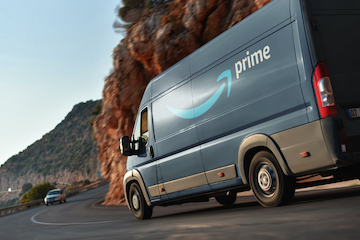Amazon’s delayed 2020 Prime Day event ran for two days — October 13 and 14 — as it did last year. While it does not release total revenue for Prime Day, Amazon touted in 2019 that Prime Day sales exceeded the prior year’s Black Friday and Cyber Monday sales combined. This year Amazon did not make such a claim.
However, an Amazon press release claimed that the marketplace sellers took in more than $3.5 billion during this year’s event, representing a higher year-over-year growth than Amazon’s own products.
Best Selling Products
Top-selling categories for third-party sellers were bedding, wireless accessories, and nutrition and wellness. In the United States, best-selling items overall — Amazon and third-party sellers — included iRobot Roomba Robot Vacuum, WiFi Enabled Smart Garage Door Opener, and LifeStraw Personal Water Filter.
Globally, across the 19 countries where the event took place, the best-selling products were Amazon’s Alexa-enabled Echo Dot and Fire Stick 4K. Other big sellers include iRobot Roomba Robot Vacuum, LifeStraw Personal Water Filter, and LEGO Star Wars Stormtrooper Helmet. Amazon ran a separate Prime Day in India in August.
Third-party Sellers
While Amazon boasted about the marketplace sales figures, many sellers were not so pleased. Some of them found that growth in sales did not convert to growth in profits because advertising costs on Amazon increased so much. Amazon ad-tech provider Pacvue’s data showed the average cost-per-click for sponsored brand ads increased 23 percent over Prime Day 2019.
Some Amazon marketplace sellers chose not to participate in Prime Day because of those increased costs. They instead focused on sales from their own sites. Some were also concerned about having enough inventory to last through the entire holiday season because Covid-19 is still disrupting the supply chain.
Other marketplace sellers reported disappointing results for Prime Day this year. Sample comments from the Seller Central forum are:
- “10/13 sales were not outside of the range of the past 7 days. 10/14 sales are a bit better, but not outside of the normal range.”
- “Prime day was not so good — did better but not enough to talk about.”
- “To give you an idea of how much sales were down from last year. Prime Day [2019], we sold in excess of 7,000 units across all our SKUs last year on the first day. This year we sold 877.”
- “No impact either day, despite extra advertising.”
Other Statistics
Market intelligence firm Numerator found that the average Amazon customer order size on Prime Day was $44.21, and 56 percent of consumers who shopped Amazon placed more than two orders. However, 45 percent of orders were under $20. The average order was $59.02 in 2019.
Amazon did not see an uptick in Prime subscriptions during the event. According to Numerator, only 1 percent of purchasers on Prime Day 2020 joined Prime during the event. Seventy-five percent of purchasers were Prime members for more than two years.
Other Merchants
According to Salesforce, which aggregates data from shoppers on its Commerce Cloud platform, on October 13 non-Amazon sites in the U.S. saw a 51 percent increase in online traffic compared with the first day of the 2019 event. Additionally, conversion rates on non-Amazon sites were up 16 percent compared with Prime Day 2019. Ecommerce sales for non-Amazon sites grew by 69 percent globally and 76 percent in the U.S. on October 13 compared with the first day of Prime Day 2019.
Major retailers Walmart, Target, and Best Buy all offered aggressive discounts and promotions on popular items during the 48-hour Prime Day sale.
Holiday Dash
Just two days after Prime Day, on Oct. 16, Amazon launched its next sale, called Holiday Dash. The promotion features different discounts each day. The objective is to offer deals similar to those available on Black Friday throughout the next six weeks.
The company issued a statement saying, “Amazon’s Holiday Dash deals event is serving up holiday cheer and epic savings early this year to give customers more time to shop and save. There’s no need to wait to secure great deals — with Holiday Dash, Amazon is making it easier than ever to find top gifts at amazing prices ahead of the holiday hustle — plus most items shipped now through December 31, 2020, can be returned until January 31, 2021.”
Amazon is not the only merchant to start early. Walmart announced it would spread its Black Friday deals over three consecutive weekends starting November 4 to reduce foot traffic in stores. Also, more of its doorbuster deals will be exclusively online to discourage in-store shopping.






